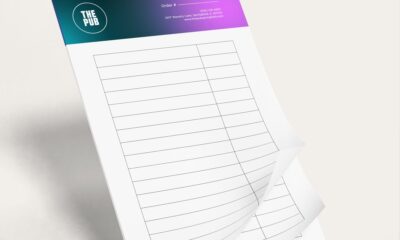Trade shows are one of the best platforms to market your brand, meet potential clients face-to-face, and build valuable business relationships. But behind every handshake and real-time promotion is a real investment of time and money. That’s why it’s essential to track your ROI, or return on investment.
ROI, or return on investment, measures how much profit or value you gain compared to what you spent. Trade shows often come with large upfront costs, making it essential to track your resources and maximize the returns. In fact, some of the biggest companies try to make back at least $5 for every $1 spent on these events.
That’s why it’s crucial to go in with a solid game plan. If you want to make your trade show experience count, you’ll need smart strategies and proper tracking to see a return on your investment.
How Does ROI Connect with Trade Shows?
Most businesses look at their trade show ROI in two ways: Direct ROI and Leads Generated.
Direct ROI is straight up the commissions and revenue earned through the specific event. ROI is calculated using the formula:
(Revenue – Total Investment) ÷ Total Investment x 100.
An Example:
If you’ve spent a total of $10,000 on trade show and earned $25,000 in closed deals, you’ll get this equation:
(25,000 – 10,000) ÷ 10,000 x 100 = 150% ROI
Meanwhile, businesses also aim to get substantial returns through customer engagement, or future sales leads, thus lead generated ROI.
If your exhibit costs $10,000 and generates 50 qualified leads, each having a customer lifetime value (CLV) of $1000, you can then calculate the ROI as follows:
(50,000 – 10,000) ÷ 10,000 x 100 = 400% ROI.
By combining both revenue-based data and customer engagement insights, businesses can better evaluate the actual impact of their trade show presence and make smarter decisions for future events.
Optimizing Your Trade Show ROI
With the basic idea of ROI laid out, let’s apply some strategies that will help you manage and track your trade show performance.
1. Set a SMART objective.
A great start to optimize your trade show ROI is by setting a SMART objective that you want accomplished within that event. This gives your team a clear direction and helps manage the required promotional materials and costs. SMART usually stands for:
- Specific: Identify one clear and focused goal. Example: Get 50 qualified leads in this trade show.
- Measurable: Goal should be easy to track with data. Example: Gain a 30% overall ROI at the trade show, 20% on direct and 10% via CRM.
- Attainable: Should be realistic based on the specific trade show. Example: Collect 100 leads, then follow-up on them promptly.
- Relevant: Goal should align with your business Example: Attract leads that can give positive feedback over this particular campaign.
- Time-bound: Has a set timeframe from the beginning to the end. Example: Obtain at least 20% more leads in this trade show vs. Last year’s trade show.
Start by identifying what you want to achieve in the trade show, whether it’s gathering leads, connecting with clients, or boosting brand awareness. Afterwards, build and organize your approach around that objective.
2. Maximize your materials and resources.
A good chunk of your trade show investment would probably go toward your marketing materials. That’s why you should ensure that your materials deliver proper results. Banners, flyers, brochures, and other promotional prints should do more than decorate your booth. They should drive engagement and support your set goals.
Start by choosing tools that not only catch attention but also encourage action:
| Materials | Purpose | ROI Tracking |
|---|---|---|
| Trade show banners | Visual display that highlights offers and attracts attention to your booth | Include a visible and scannable QR code. |
| Flyers | Hand out to promote service that’s specific to the trade show’s goals | Use the contact numbers listed to collect leads |
| Business cards | Connect with clients and interested customers | Can be easily recorded by the person handing out the cards. (personal contact info vs. Company contact info) |
| Sign up sheets | Get interested attendee’s email and contact info to send them promotions. | Gather responses and conversions based on online promotions sent through their email. |
Once you have your printed materials set, add ways to track their returns. Integrate innovative tools like trackable QR codes that link to exclusive pages and create follow-up emails or retargeting campaigns tied to the trade show.
3. Measure everything and gather key data.
The most important step comes in tracking both financial ROI and other trade show achievements.
CRM tools, QR code scan tracking apps, lead retrieval programs, follow up responses , and post-event surveys all help gather insights you can use to measure and calculate your ROI. Some of the programs you may use include:
Google Analytics
Use this tool to track organic searches and visits to your website. Try to check whether your website’s performance increased following the trade show promotions.
CRM Platforms
Hubspot, Zoho, and other CRM tools can help compile and organize information you’ve got from sign-up sheets and turn them into leads that you can follow up on. You can also use these to track whether they’ve converted into purchases.
QR Code Tracking
Most QR generating tools also offer monitoring and tracking for those who’ve visited your brand webpage through the QR code links. If you’ve created unique QR codes for your business cards or flyers, you may also check if they’ve made purchases or are bringing in new customers.
Email Engagement
Finally, if you’ve sent follow up emails to the trade show leads, you can easily check whether they’ve responded or made conversions through apps like Klavio or Mailchimp.
You can then collate these responses and use the data to not only calculate your ROI but also improve your promotional strategies for the next events.
4. Use short-term ROI in long-term projects.
So, what happens after gathering the data?
The next step is to turn the numbers and insights into action. Review what worked, spot what needs tweaking, and let go of what didn’t deliver results. Here’s how to break it down:
- Keep what connects to your audience.
Stick with the strategies that pulled people in and helped spark brand interest.- Lead-capturing QR codes
- Interactive materials
- Promotions with strong response
- Printed materials that created positive impressions.
- Improve anything that felt underwhelming.
Don’t remove these strategies completely. Make the necessary adjustments in design, delivery, or timing to help it perform better next time.- Signs that don’t resonate with customers
- Flyers that perform poorly
- Brochures that lack clear value
- Booth setup flaws
- Drop what didn’t add value.
Save time and budget by cutting what didn’t support your goals.- Freebies or poor-performing giveaways
- Displays that failed to start conversations
- Promotions that do not fit the trade show aesthetic
- Dropping trade show participation altogether (if necessary)
Use insights gained from CRM data and trade show responses to plan long-term campaigns and build stronger relationships. Also, don’t forget to nurture the leads you’ve made, either by following them up with future deals or inviting them to your future events.
Recap
Maximizing your trade show ROI goes beyond revenue and costs; it’s also about building your brand, forming client and customer relationships, and gaining insight that will benefit your industry. Every event is a chance to fine-tune your message, increase visibility, and create connections that lead to long-term growth.
Start choosing trade shows that align with your brand vision and goals that you can attain. From there, set up your booth with attractive printed trade show materials from UPrinting, reach out and communicate with the attendees, and prepare to record your trade show conversions. By investing wisely in the right events and the right marketing tools, you’re not just aiming for immediate results; you’re setting your brand up for growth beyond the trade show floor.



